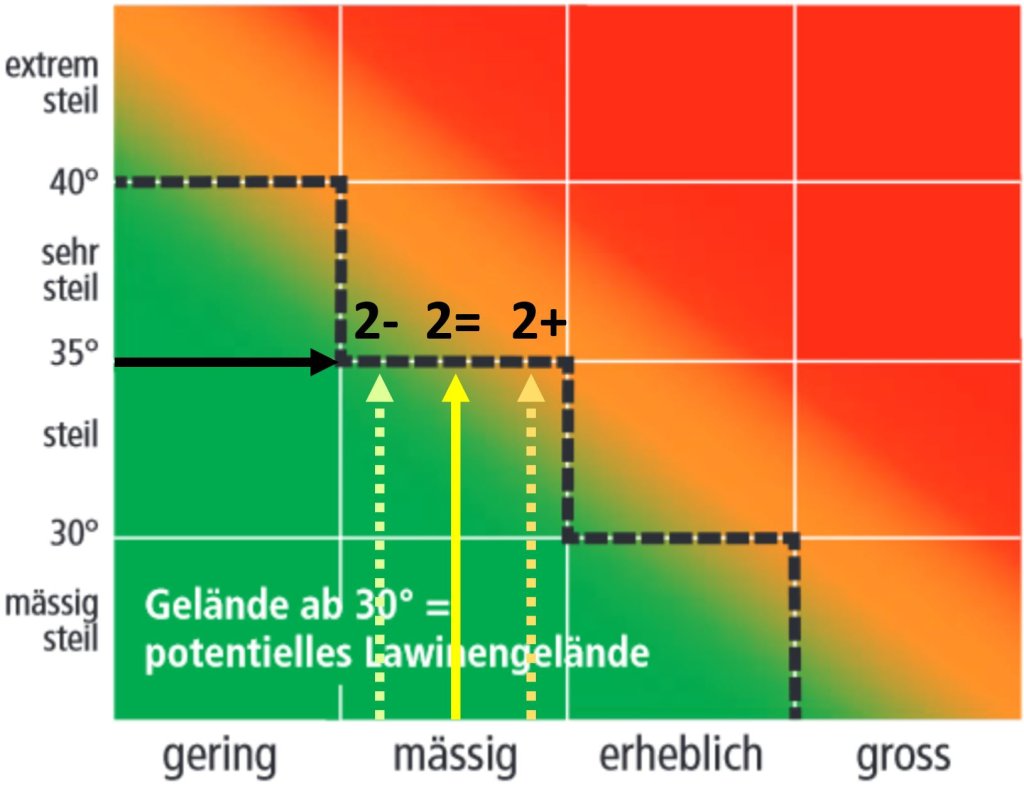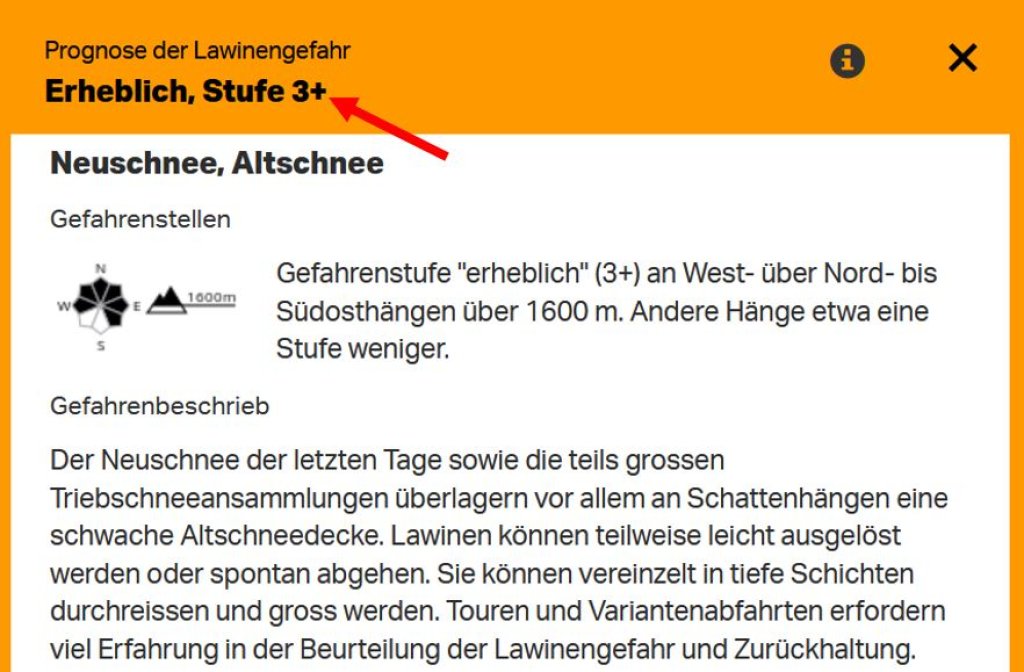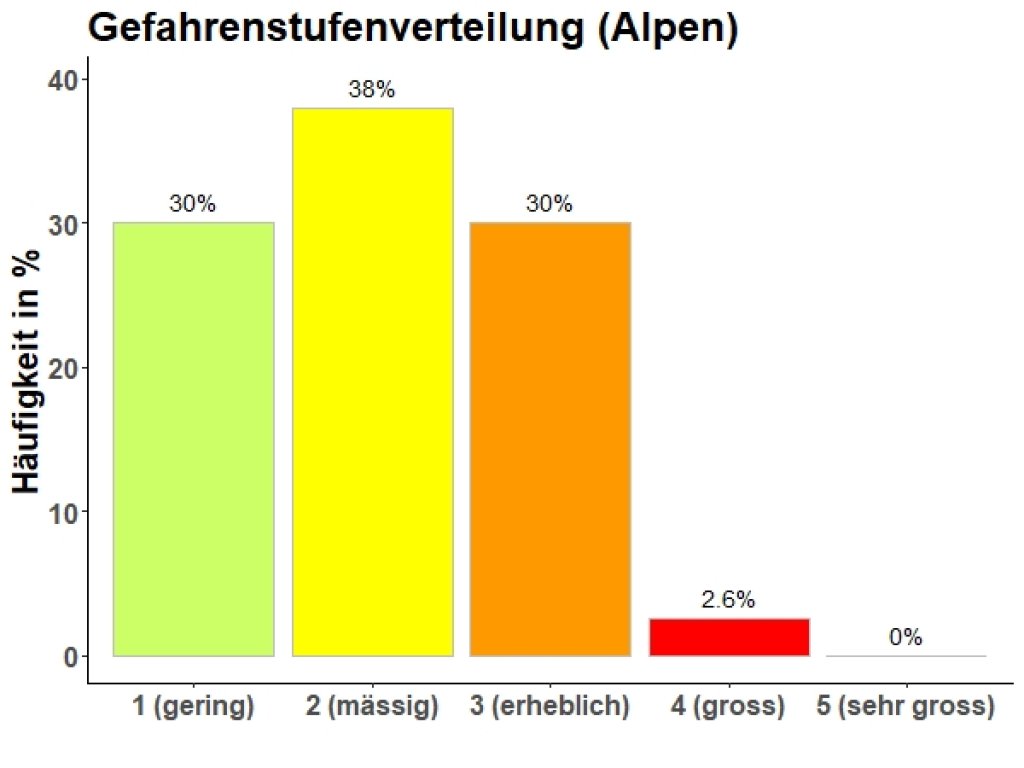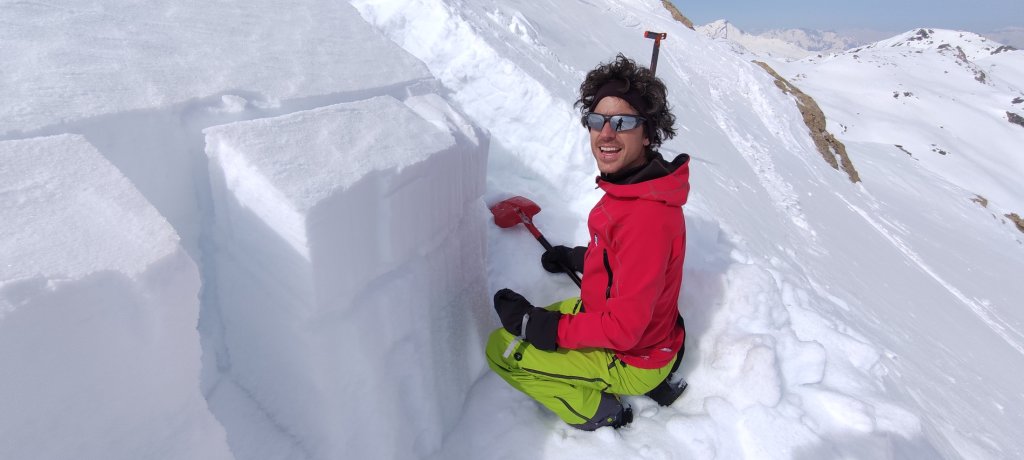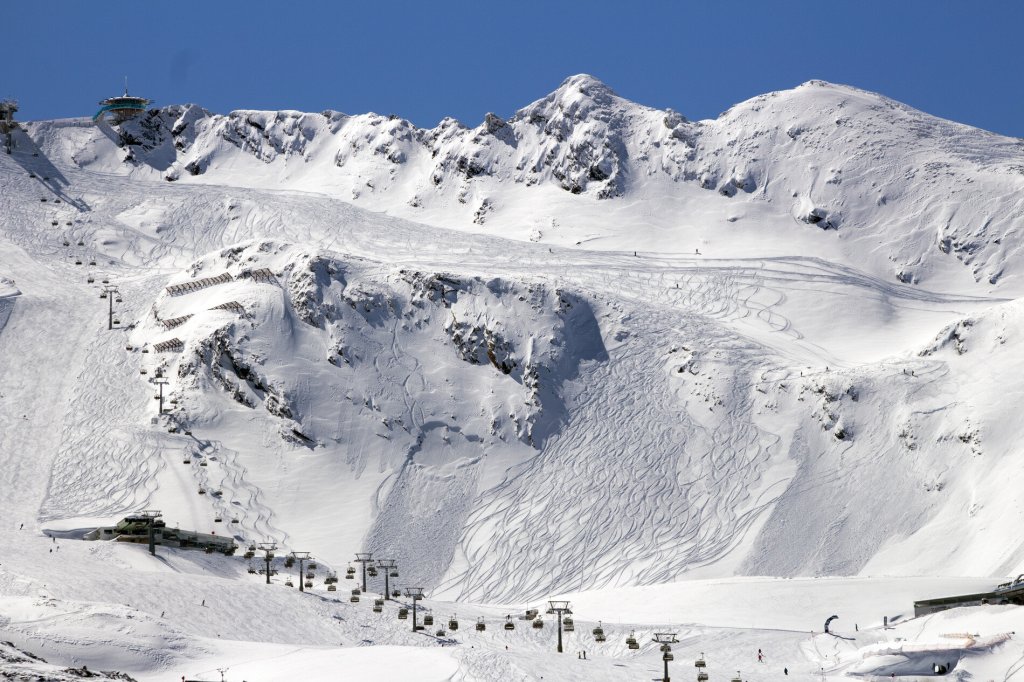Intermediate levels: Frequently requested by users
Anyone who spends a lot of time on tour or freeriding will know that a "considerable" can feel quite dark orange on some days, while on other days it feels more like a "moderate". From a practical skiing perspective, it therefore seems obvious to differentiate the five-level danger scale more precisely. In the text of the Swiss bulletin (and also in the situation reports of many neighboring countries), the severity and level of danger are often described more precisely than just with the level. For example, a textual distinction between "winter sports four" and "infrastructure four" has become increasingly common in recent years.
The desire for a more precise subdivision in the bulletin - not only in the text, but also in figures - has been repeatedly brought to the SLF, according to Kurt Winkler, SLF avalanche warning officer. For six winters now, SLF forecasters have been estimating intermediate stages in addition to the usual contents of the bulletin, but these have not been publicly available until now. After several years of internal testing, extensive statistical evaluations and two scientific publications, the intermediate levels are now ready for regular use in the bulletin.
From theory to practice
A subdivision of the hazard levels doesn't sound particularly complicated at first, but the path to the operational version was long and laborious. One thing was clear: the SLF wanted to respond to users' requests for a more precise subdivision. But how do you go about it?
First, a theoretical basis had to be found on which the practical implementation could be built. When people categorize something, they can only do so in about five to a maximum of seven defined classes. More is too much, we are then no longer able to differentiate meaningfully between the classes. It is therefore not expedient to extend the five-level danger scale by several whole levels. Apart from these psychological factors, a change to the five-level scale would also be neither politically realistic nor desirable, according to Winkler (compatibility with standards of other Swiss natural hazards and the EAWS - European Association of Avalanche Warning Services).
In contrast, a subdivision within individual hazard levels seemed to be consistent in terms of decision-making theory and could also be implemented at all other levels. After all, people are quite capable of determining a relative ranking within a class after it has been divided into defined classes. Winkler, who played a key role in the introduction of the intermediate levels, explains the concept using the example of fast food restaurants: "Fast food is the defined restaurant class and is objectively differentiated from other classes such as Michelin-starred restaurants. Within the fast food class, I decide on a restaurant based on a subjective ranking, for example because I prefer to go to McDonalds rather than Burgerking or vice versa. The subjective ranking exists within the objective class and does not change it.
The principle of "fast and slow thinking" made famous by Daniel Kahneman also comes into play in the intermediate stages. Here, fast, heuristic, instinctive thinking contrasts with slower, more logical, rule-based considerations. The five known avalanche danger levels result from the latter: The definitions of the scale and the EAWS matrix specify the class and the creation of the levels follows known, objective rules. Within the defined classes of danger levels, a subjective ranking can now be created in the form of intermediate levels. The progonostics determine them more or less by feel, without following a concrete set of rules. First, the entire level is determined (e.g. 3, considerable). If this is unambiguous, the middle, neutral sub-level is added to the whole level (3=). However, if the forecasters find that "today is a sharp three", or "the four is not quite so tricky this time, this is almost a three", then level 3 is given the addition 3+, or level 4 is supplemented by a 4-.
This additional information (e.g.: critical three) was already contained in the text before, so it is not fundamentally new content. It is also not surprising that avalanche warnings are able to assess the danger in a more differentiated way than the five-point scale allows. Winkler emphasizes that the knowledge with which the intermediate levels are intuitively created must be available anyway in order to write the textual summary of the avalanche situation in the bulletin. However, the intermediate levels now present the underlying information in a more categorical and consistent way.
